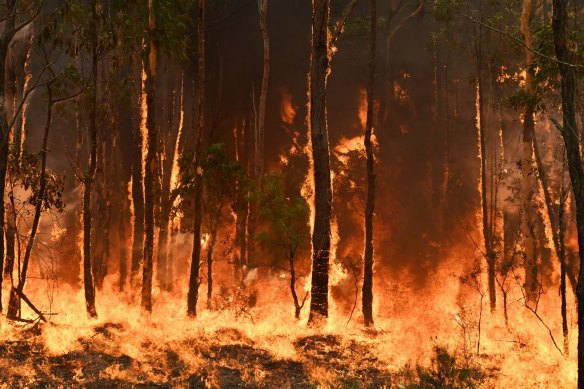Demystifying BAL Reports: A Guide to Comprehending Your Building's Bushfire Threat
Demystifying BAL Reports: A Guide to Comprehending Your Building's Bushfire Threat
Blog Article
Just How BAL Report Impacts Bush Fire Security Steps
In the world of bush fire protection, the Structure Strike Degree (BAL) record stands as a vital device that significantly affects the safety and security and durability of buildings in fire-prone locations - BAL Report. The impact of a BAL evaluation prolongs far past simple paperwork; it works as the keystone for figuring out the appropriate building standards and fire protection actions needed to alleviate the threats postured by bushfires. As areas face significantly severe fire periods, comprehending just how the BAL report forms these safety measures ends up being paramount for policymakers, building contractors, and house owners alike
Recognizing the Bushfire Assault Level

Significance of BAL Report Assessment

Moreover, the BAL record evaluation works as a fundamental action in abiding by lawful obligations and demands connected to bushfire defense. Neighborhood councils and authorities often mandate the entry of a BAL record as component of the preparation and building authorization process to ensure that residential or commercial properties are appropriately guarded versus bushfire dangers. Stopping working to carry out a detailed BAL record evaluation can cause poor defense procedures, leaving buildings susceptible to ravaging bushfire events.
Building And Construction Specifications Based on BAL
A thorough understanding of the Bushfire Strike Degree (BAL) makes it possible for homeowner to carry out building standards customized to their particular risk profile. Construction criteria based upon BAL are critical in reducing the effect of bushfires on homes. The BAL rating categorizes the prospective risk a property encounters during a bushfire on a range from BAL-Low to BAL-FZ (Fire Zone) Each BAL degree represents specific building demands outlined in the Australian Typical AS3959-2018 Building of Structures in Bushfire-Prone Areas. Properties categorized as BAL-Low might only call for basic measures such as getting rid of particles her comment is here and preserving yards, while those in higher BAL categories require more robust procedures like ember screens, fireproof materials, and sealed home windows. Abiding by these construction requirements not just boosts the structural durability of wikipedia reference the home yet also enhances the general safety and security of locals throughout a bushfire occasion. Therefore, homeowner must meticulously consider their BAL rating and comply with the corresponding building and construction criteria to effectively guard their homes and residents.
Applying Fire Security Steps
With the foundation of building and construction standards based on Bushfire Attack Level (BAL) in location, the focus now moves in the direction of the functional execution of fire defense procedures to strengthen homes against bushfire risks. Passive steps consist of utilizing fire-resistant building products, setting up ember guards on vents, sealing voids in wall surfaces and roof coverings, and keeping a clear room around the home complimentary from flammable greenery. By integrating both passive and energetic methods, properties can considerably minimize their vulnerability to bushfire cases and raise the security of residents.
Shielding Houses Versus Bushfires
Properly guarding homes versus the damaging effects of bushfires needs a detailed and positive method to fire i was reading this security steps. Additionally, securing spaces and vents to stop coal invasion, as well as incorporating fireproof doors and home windows, can assist fortify the home's defense versus bushfires. By welcoming a positive stance and incorporating these safety steps, property owners can considerably increase their opportunities of protecting their homes versus bushfires.
Conclusion
Finally, the Bushfire Assault Degree (BAL) record plays a critical duty in establishing the required protection measures versus bushfires. By evaluating the BAL, building and construction criteria can be customized to reduce the risks and make sure the safety of homes in fire-prone locations. Carrying out fire security actions based on the BAL record is vital in guarding homes from prospective bushfire threats. It is important for property owners to focus on BAL assessments and comply with recommended construction standards to enhance bushfire durability.
In evaluating bushfire risk to buildings, comprehending the Bushfire Strike Level (BAL) is a vital element for carrying out reliable protection procedures. Generally, a clear understanding of the Bushfire Strike Degree is crucial for implementing appropriate security procedures and minimizing the influence of bushfires on homes.

Report this page